NRS-490 Literature Review: Thrombolysis in Acute Ischemic Stroke
VerifiedAdded on 2023/03/29
|6
|1229
|350
Literature Review
AI Summary
This literature review examines the effectiveness of tissue plasminogen activator (tPA) in treating acute ischemic stroke patients within 4.5 hours of symptom onset, focusing on improved neurological outcomes. It compares research questions, sample populations, and study limitations across multiple articles, highlighting the importance of timely tPA administration. The review concludes that early thrombolytic intervention can significantly reduce the severity of neurological deficits, emphasizing the need for proper patient monitoring and further research in this critical area of stroke management. Desklib offers a wealth of resources, including past papers and solved assignments, to support students in their academic endeavors.
1 out of 6
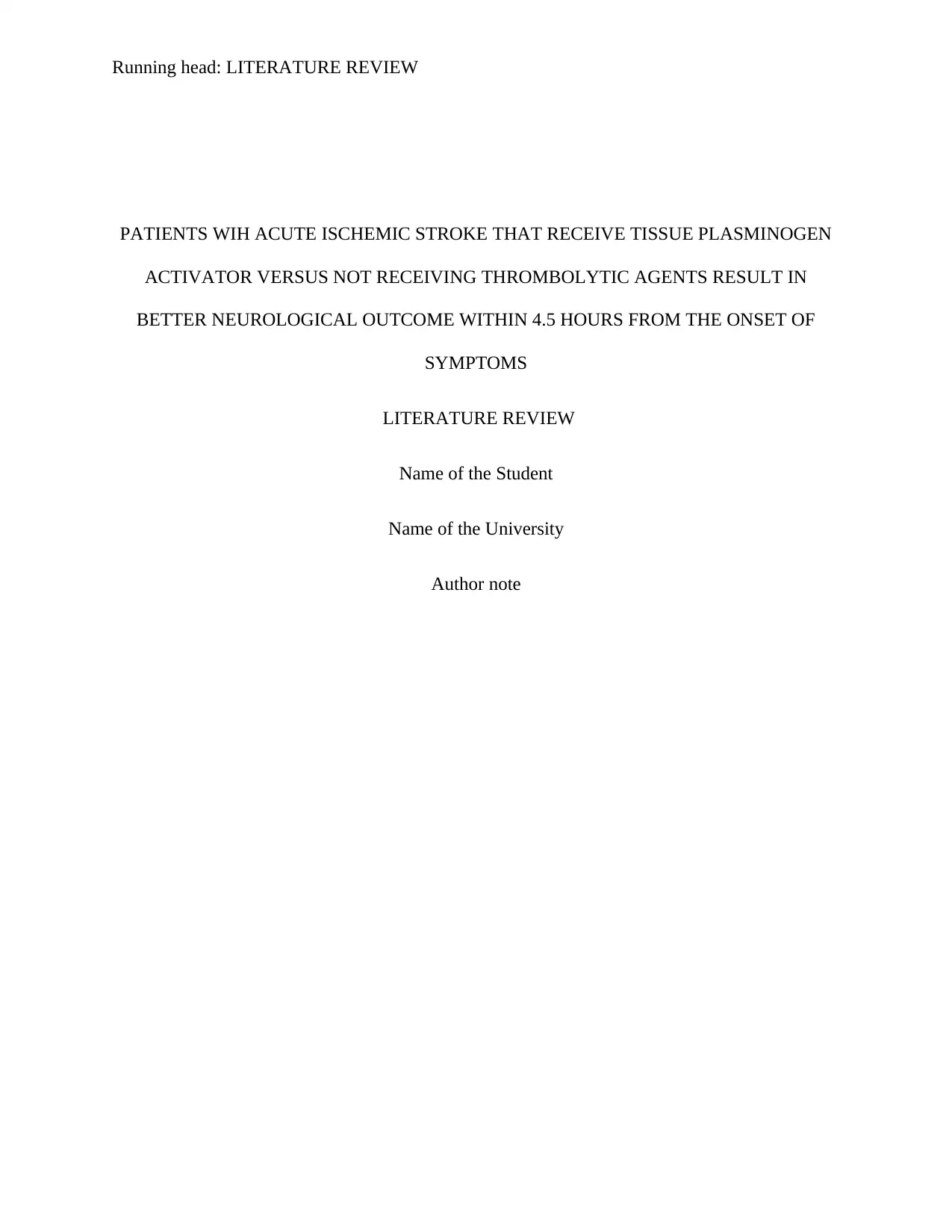
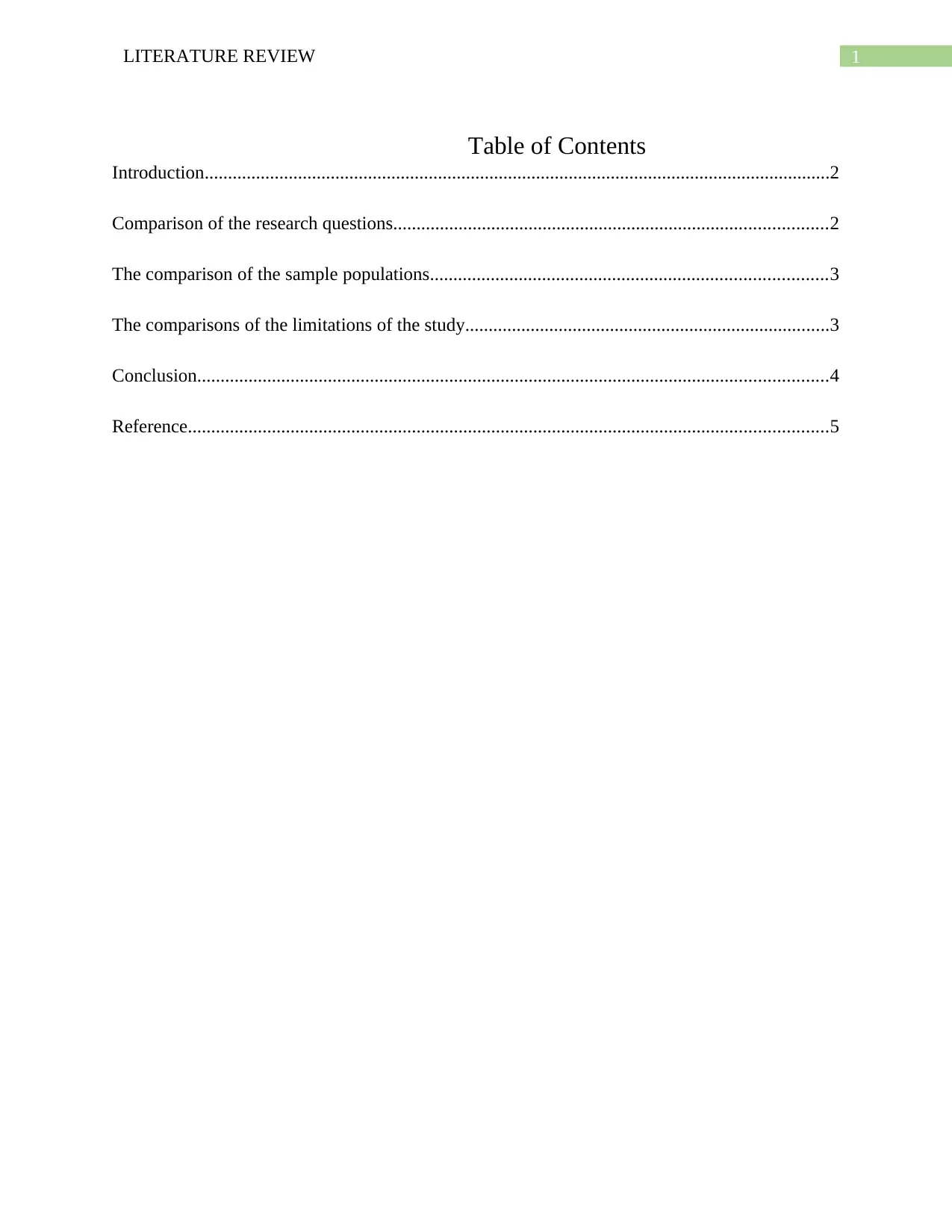
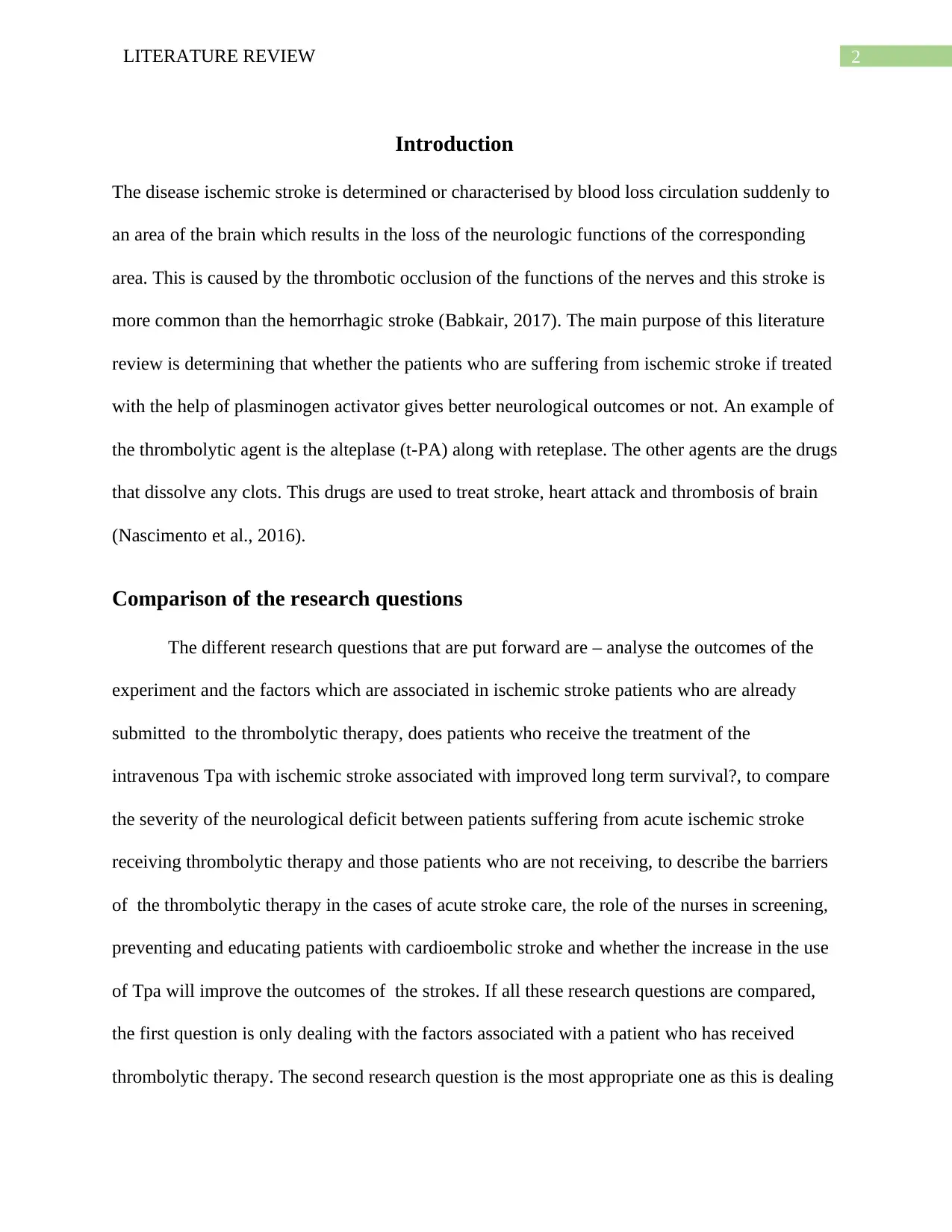
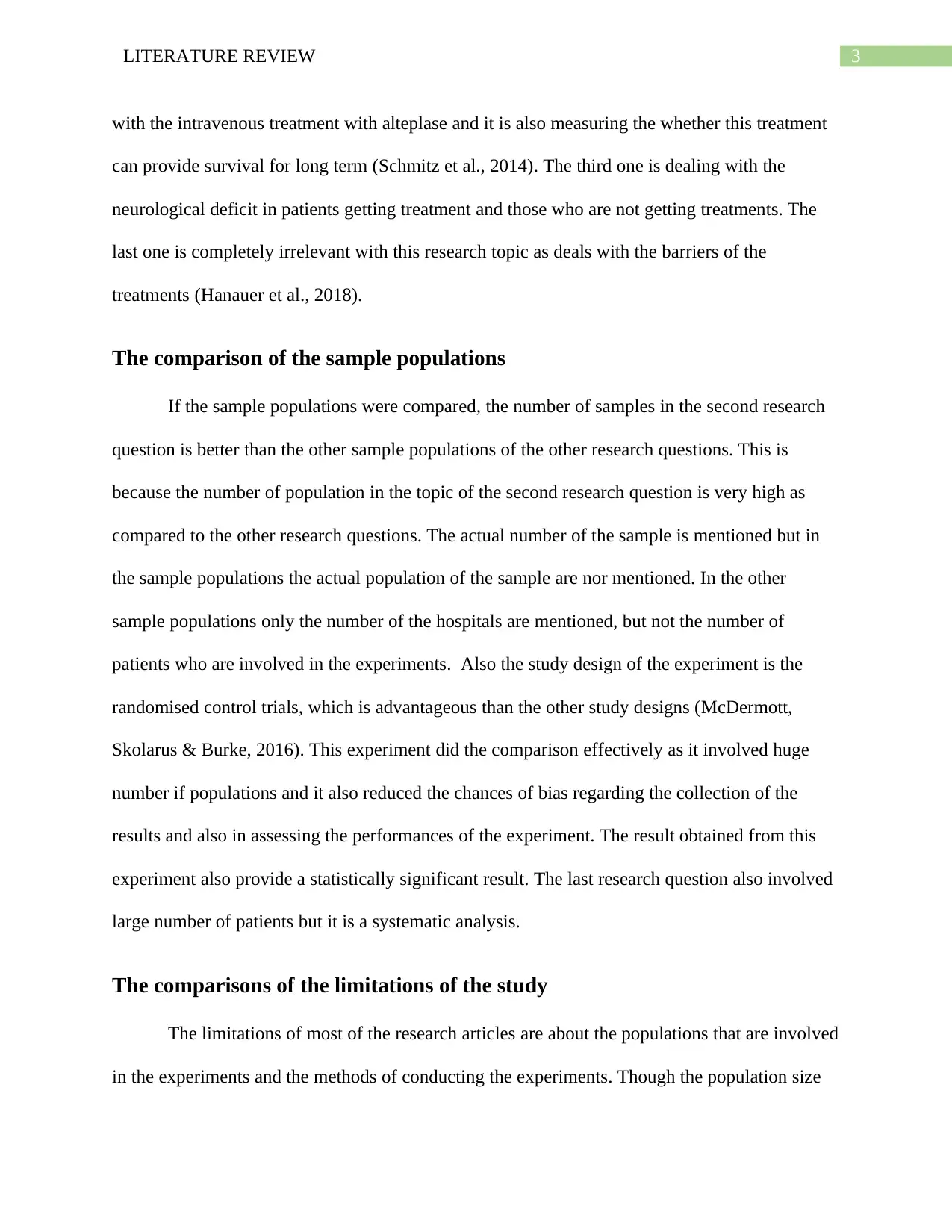
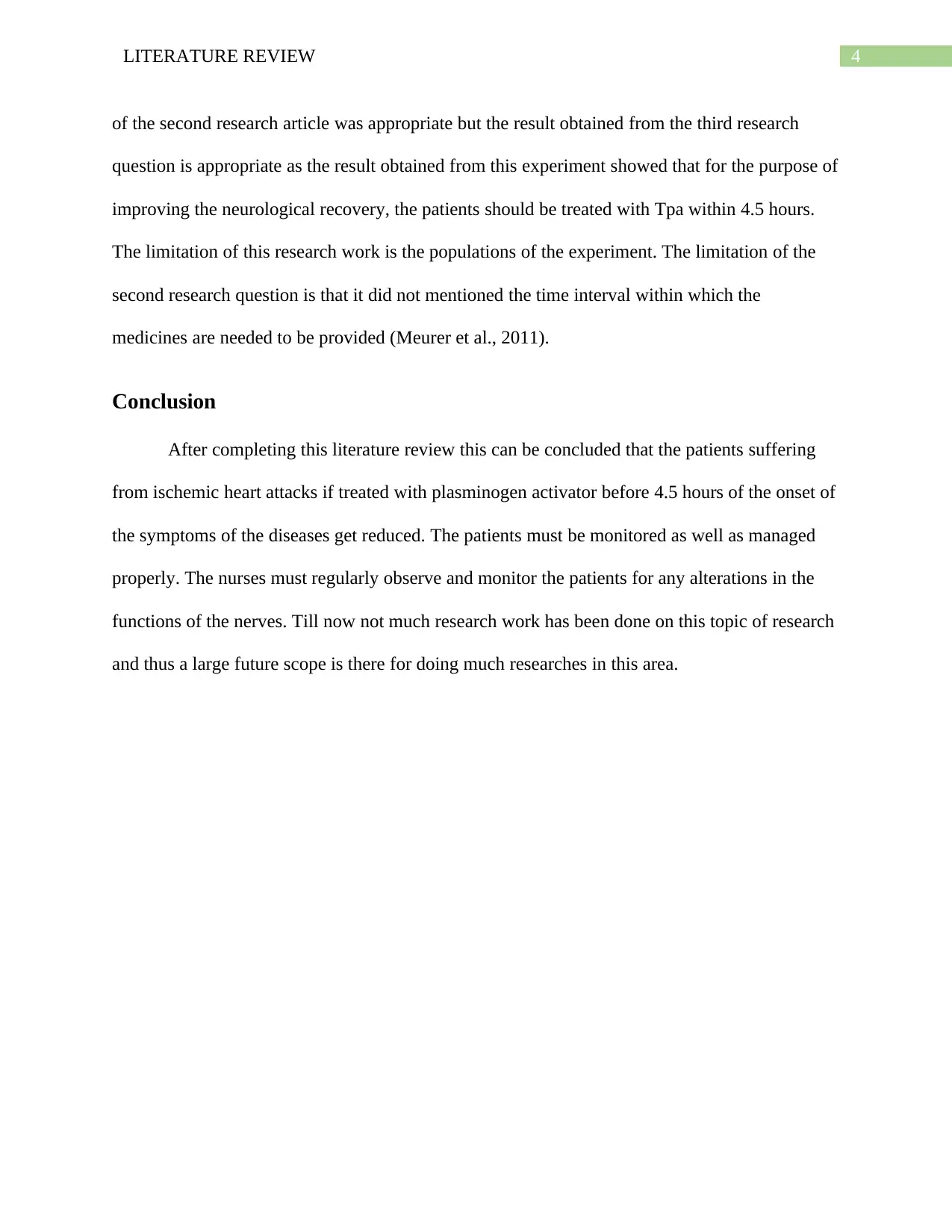
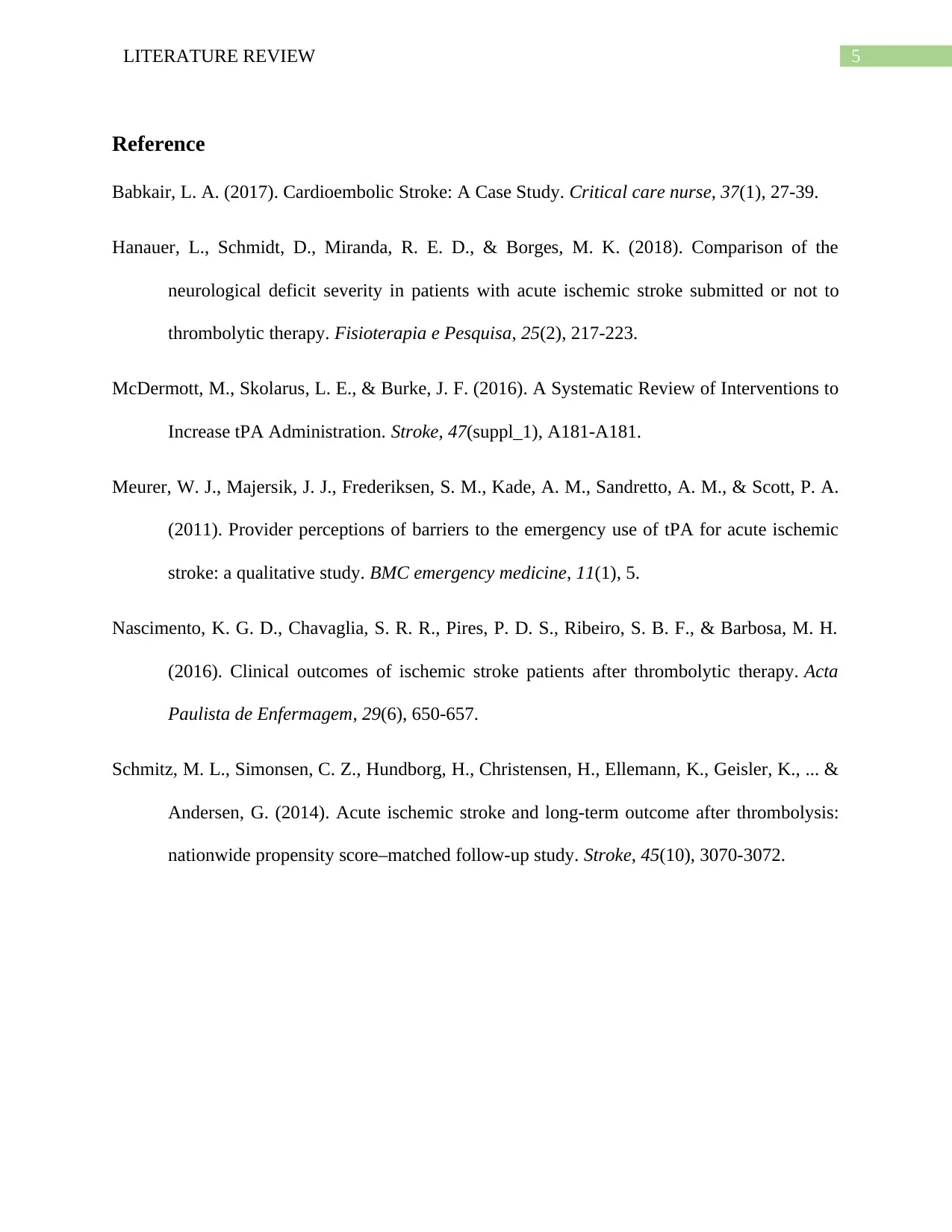






![[object Object]](/_next/static/media/star-bottom.7253800d.svg)